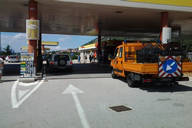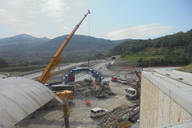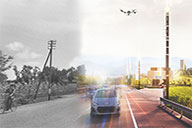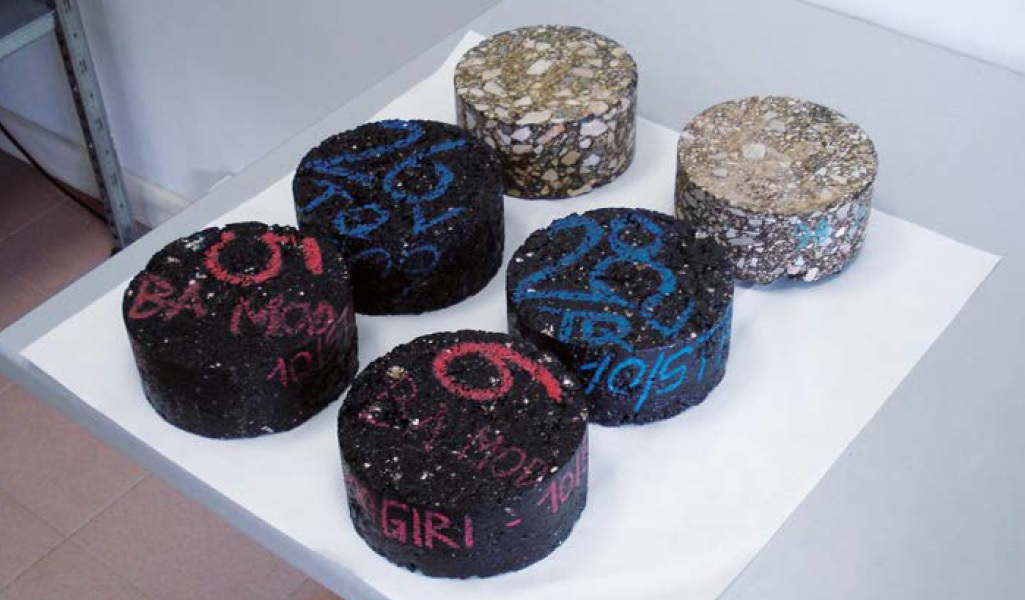The Cesano Research Centre (CRC) is a benchmark for certified consulting services and for high-performance testing and services for modern road-network management, construction and maintenance.
Since 1968, the CRC is listed as one of Italy's official National laboratories (Law n. 95/68) and it is a third party certification authority that verifies compliance with technical regulations and quality standards in road works.
The Cesano Centre's technicians and managers participate in many work groups and committees — UNI (Italian Organization for Standardization), FEHRL (Forum of European National Highway Research Laboratories), CEDR (Conférence Européenne des Directeurs des Routes), PIARC (Permanent International Association of Road Congresses), SITEB (Italian Association of Asphalt Bitumen Roads) — that prepare and update" technical standards" and disseminate information and results on road-related issues.
The Center is also more and more involved in searching for innovative solutions in road management, emphasizing high-tech solutions and minimizing road works' environmental impact. It also contributes to disseminate knowledge on its test results, technical and performance standards and guidelines.
| SOME HISTORIC INFORMATION | |
|---|---|
|
1962 |
CRC - year of foundation |
|
1968 |
CRC is listed as one of Italy's official National laboratories (Law n. 95/68) in road testing and development |
|
1971 |
CRC's laboratory tests and activities are recognized in many fields. |
|
2005 |
Anas' Articles of association establish our participation in studies, research and experiments on road networks, traffic and circulation |
Activities
Tests on construction materials - The Cesano Research Centre (CRC) tests construction materials, particularly those used in roadways. It conducts testing and analysisi on samples of any kind of material for Anas, other administrations, authorities and private companies. These activities are conducted in the following laboratories: chemical, pavement, structural, geotechnical and road signage.
|
|
Chemical Laboratory
|
|
|
Structures Laboratory
|
|
|
Pavement Laboratory
|
 |
Geotechnical Laboratory (Soil, Rocks, Geosynthetic materials)
|
 |
Road signs and Road surface markings laboratory
|
The Centre carries out advanced testing with high efficiency systems.
Among the main projects the CSS is engaged in, there is DYNAMAP (DYNamic Acoustic MAPping), a LIFE+ project that aims to develop and implement a dynamic noise mapping system capable of detecting and representing - in real time - the acoustic impact of road infrastructure. The main objective of this project is to facilitate the updating of “noise maps”, which, as established by the European Noise Directive 2002/49/EC, shall be performed every 5 years, and reduce all related costs.
The CCS also carries out a number of other activities, such as testing of new noise-absorbing and low-emission pavements and research for new additives to use in asphalt layers.
ACOUSTIC MONITORING
Anas systematically measures noise exposure, in response both to requests from individual citizens and reports received from local authorities. We conduct on-site measurements all year round to determine the exposure to noise and then process the data recorded at the homes of affected users in order to evaluate each situation and adopt adequate solutions.
NOISE EMISSION: ROAD SURFACE
Anas has developed a vehicle that measures the noise emissions produced by vehicle-road surface interactions (CPX – Close ProXimity method). This vehicle is designed to measure the effects of the installation of low-emission road surfaces. Over the last years, emissions on some different areas covered by the National Noise Abatement Plan have been measured.
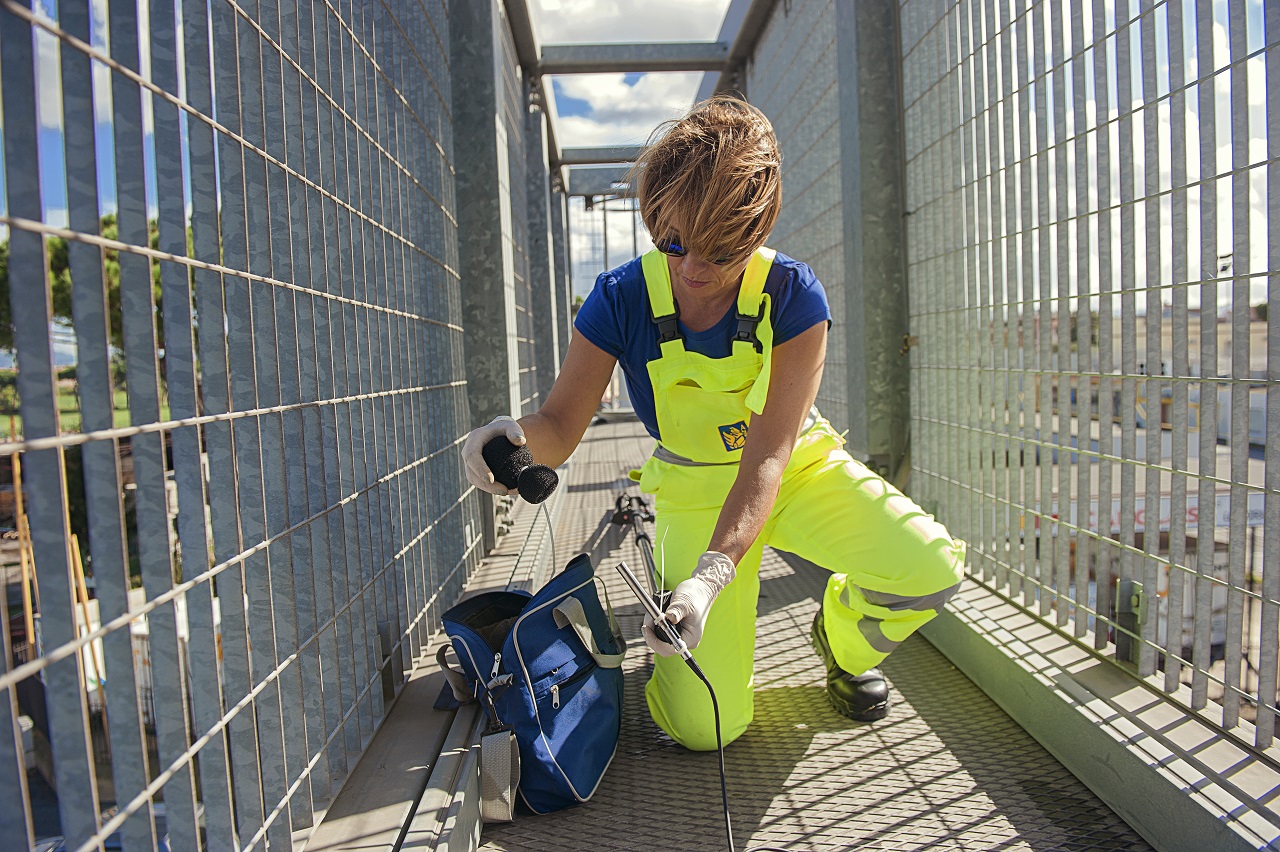
BARRIERS
For passive "safety devices", through our Cesano Research Centre, we have designed — and validated (with crash tests) — a complete range of continuous road safety barriers, with shielded poles that provide maximum safety, even for vulnerable road users such as motorcyclists.
This feature — along with others (such as the minimum deformation of space after an accident/ impact) — has been installed on many of our roads.
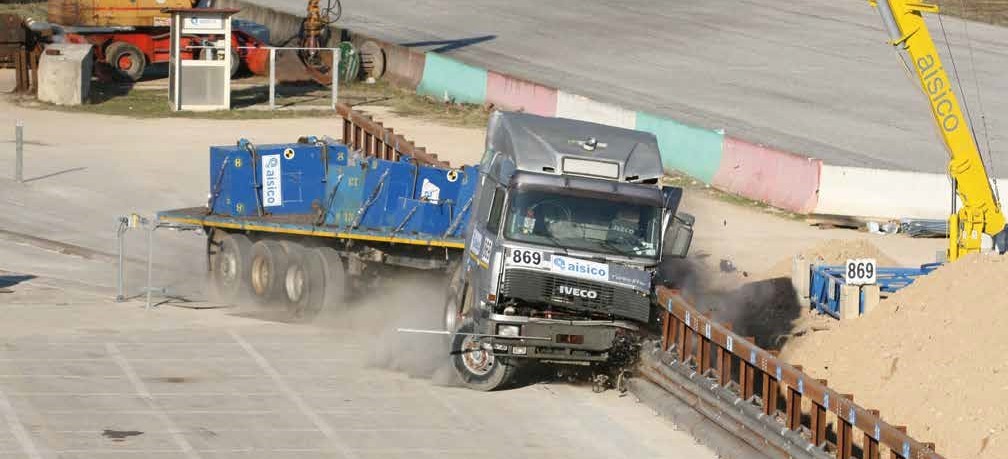
ROAD SURFACE MONITORING
The road surface is crucial for active safety. Even when there are no visible signs of deterioration and the surface looks in order, it must be checked regularly. We constantly monitorsour road surfaces’ quality by using equipment we have developed such as:
ERMES, a cutting-edge unit that measures road surface slipperiness (under worst case conditions, e.g., when the road is wet) and road uniformity (measuring intensity and frequency vibrations induced on the vehicles using the road);
FWD (Falling Weight Deflectometer by Dynatest) - this uses an impact mechanism to strain the surface and measures its response in terms of deflection range; on the examined spot, the paving lift is measured;
TSD (Traffic Speed Deflectometer) is an extrenmely advanced vehicle. It uses a set of laser Doppler units to measure the extent to which the roadway lowers under the weight of the vehicle’s rear axle and does so at high speed, without interfering with traffic. This tool measures the road pavement's bearing capacity with continuity along the route;
CARTESIO is a high-performance system that is used to detect road features, with two laser 3D LCMS profilometers (Laser Crack Measurement System) that measure and reconstruct, within a width of 4 metres, the road surface with a 1 mm resolution. This system enables the automatic analysis of cracks, holes, patches and the assessment of ruts and macrotextures.
Every year thousands of kilometres of our roads are analysed and the following parametres are calculated: IRI – International Roughness Index, CAT – coefficient of transverse adhesion; PHD – Post-impact Head Deceleration, and Lift. Through these parameters "quality indicators" of road surfaces are measured so as to ensure users safety and comfort.
Our goal is to monitor the road surfaces on our entire national network (whose perimeter will be defined by MIT) by the end of year 2020.
WE ARE CONSTANTLY TESTING NEW ROAD SURFACES TO MAKE YOUR JOURNEY SAFER AND MORE COMFORTABLE

ROAD SURFACE MARKINGS
Certain details are best perceived under adverse conditions. Particularly at night and when visibility is poor, e.g. with rain or fog, clearly visible road surface markings are a form of “active safety” that makes a huge difference and saves lives.
Every year Anas monitors thousands of kilometres of roads and motorways, measuring the retroreflection – parameter that measures night visibility – of edge lines and centre lines through a specialized mobile laboratory (DELPHI – DELineation PHotometric Instrument). By using a special instrument, this vehicle illuminates the road surface markings and measures their "visibility" by simulating the geometry of what the driver sees when he looks at these markings while driving.

CLEARLY VISIBLE ROAD SURFACE MARKINGS SAVE LIVES



